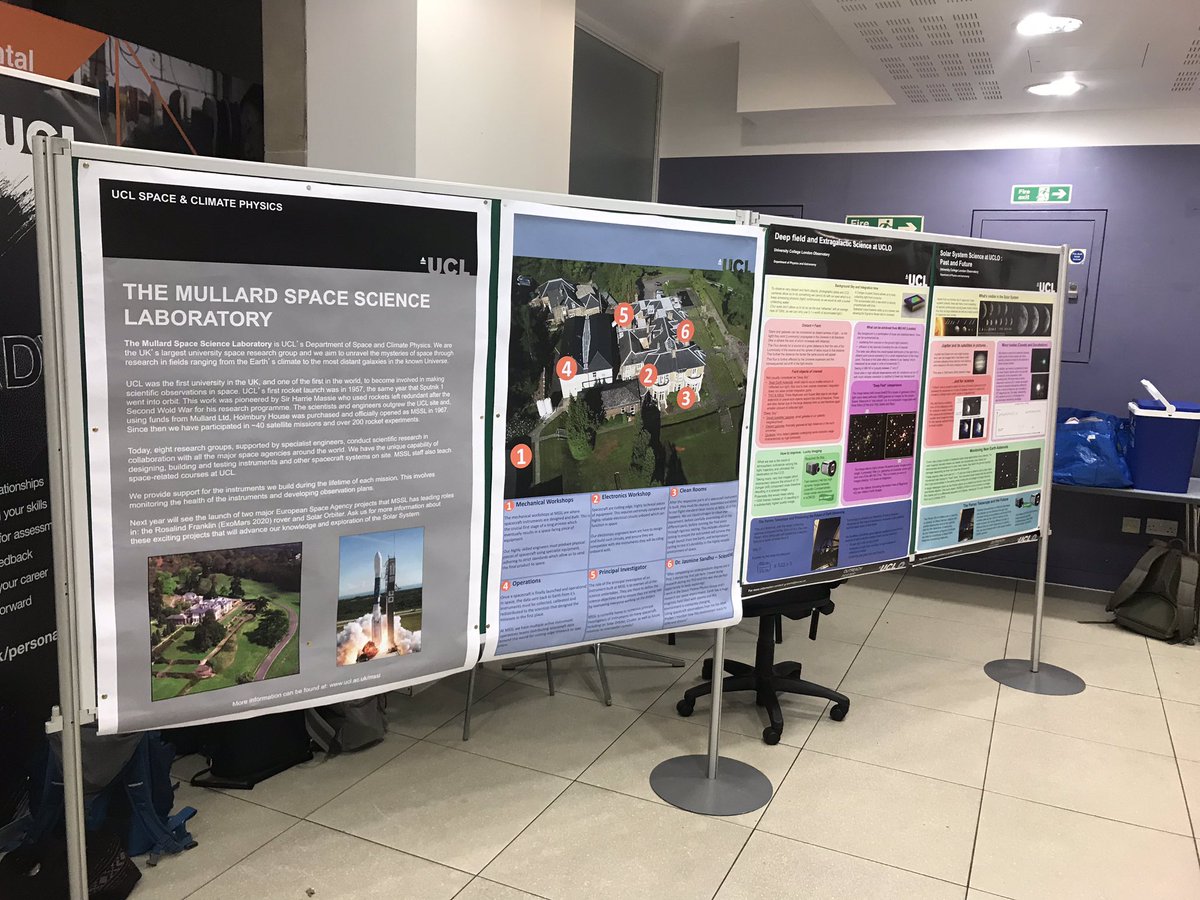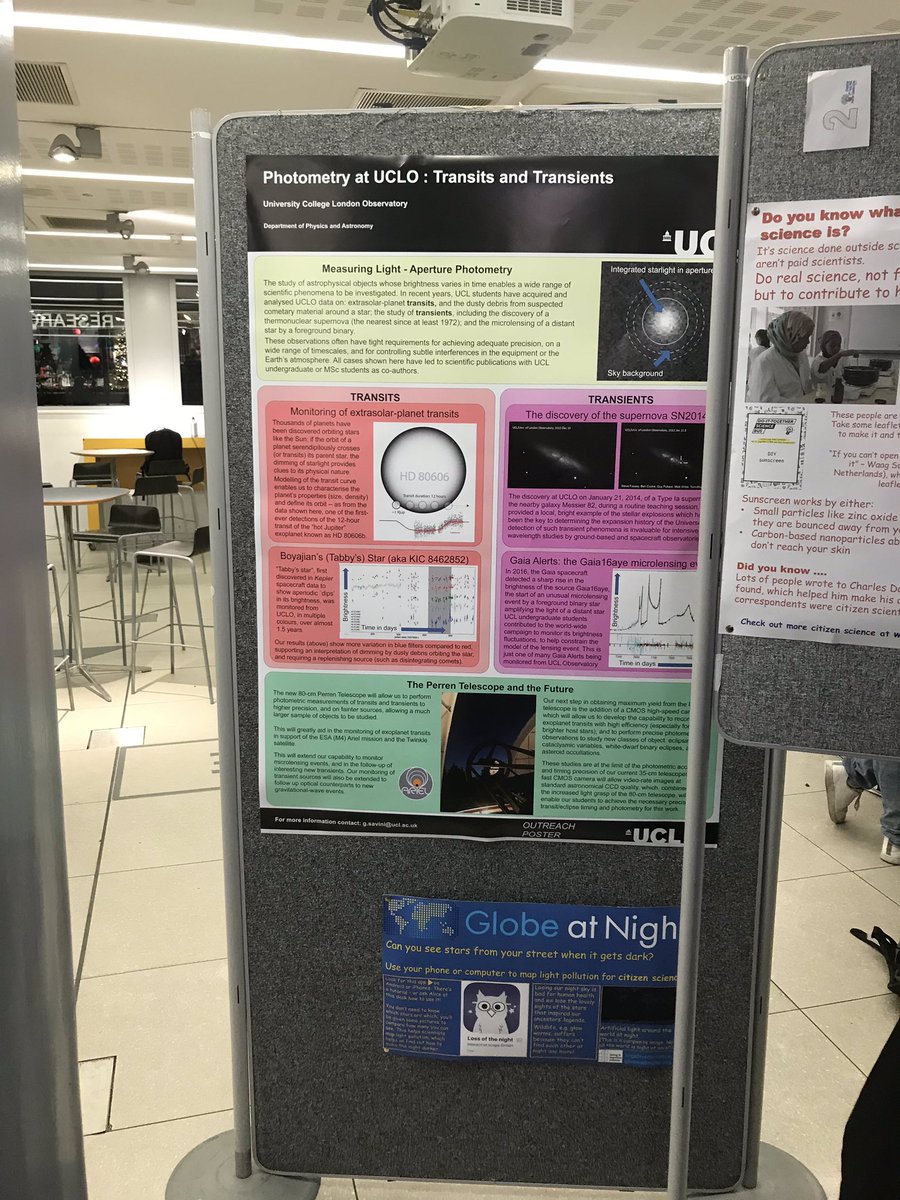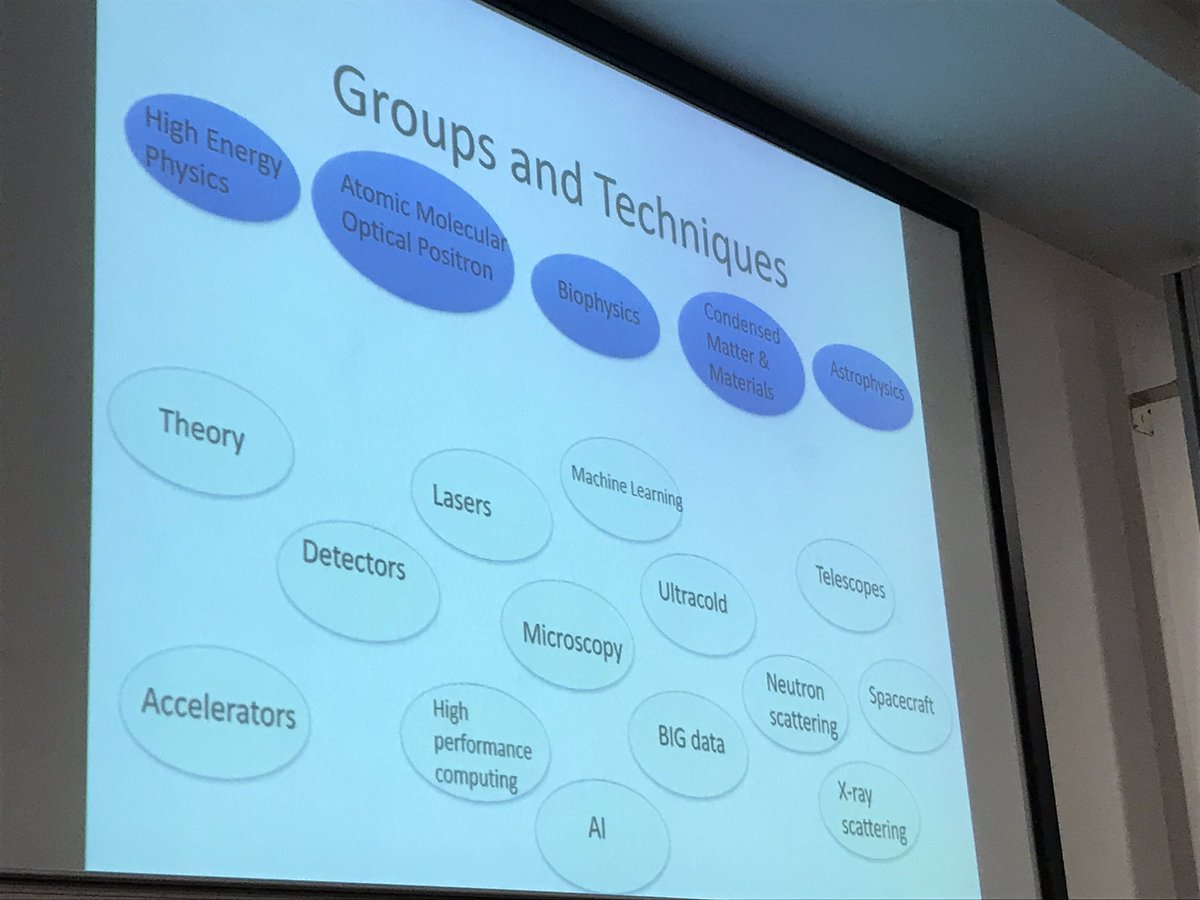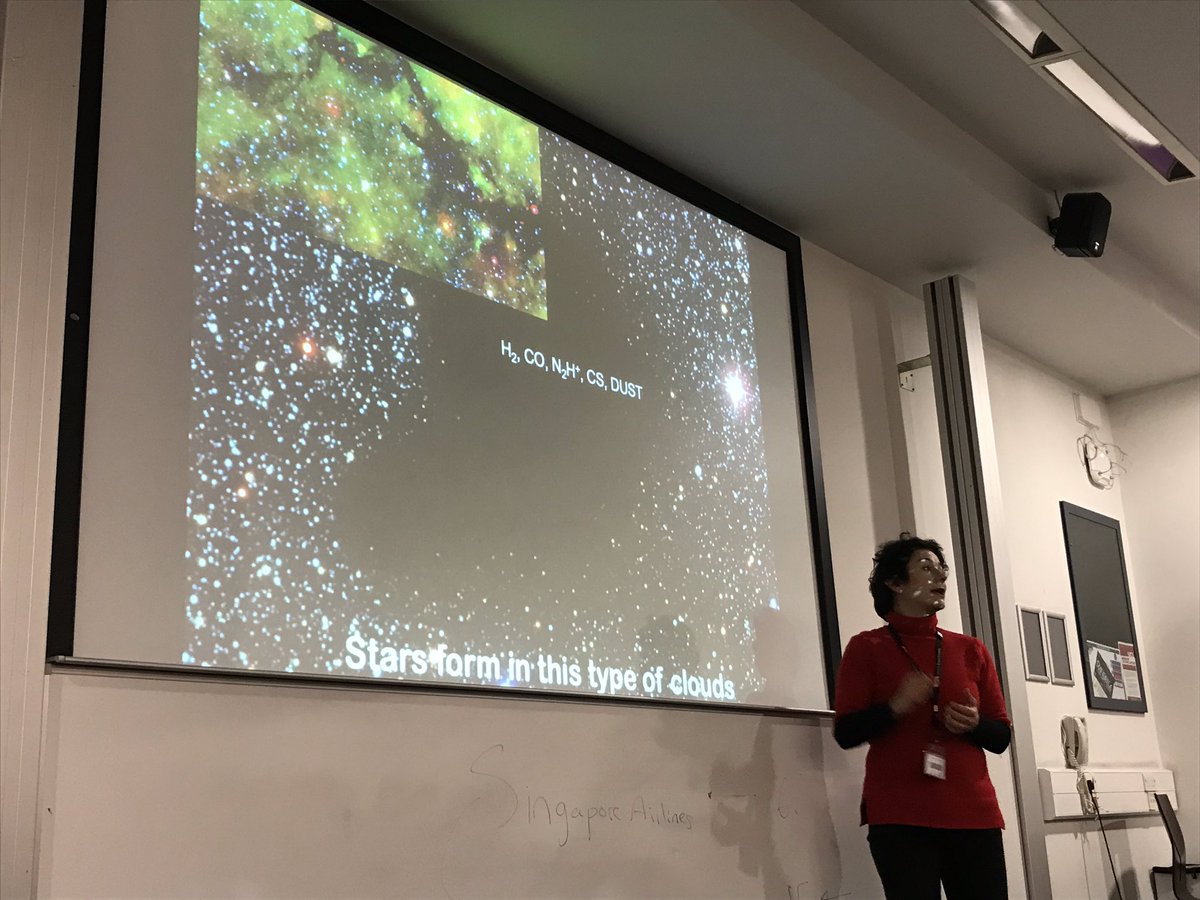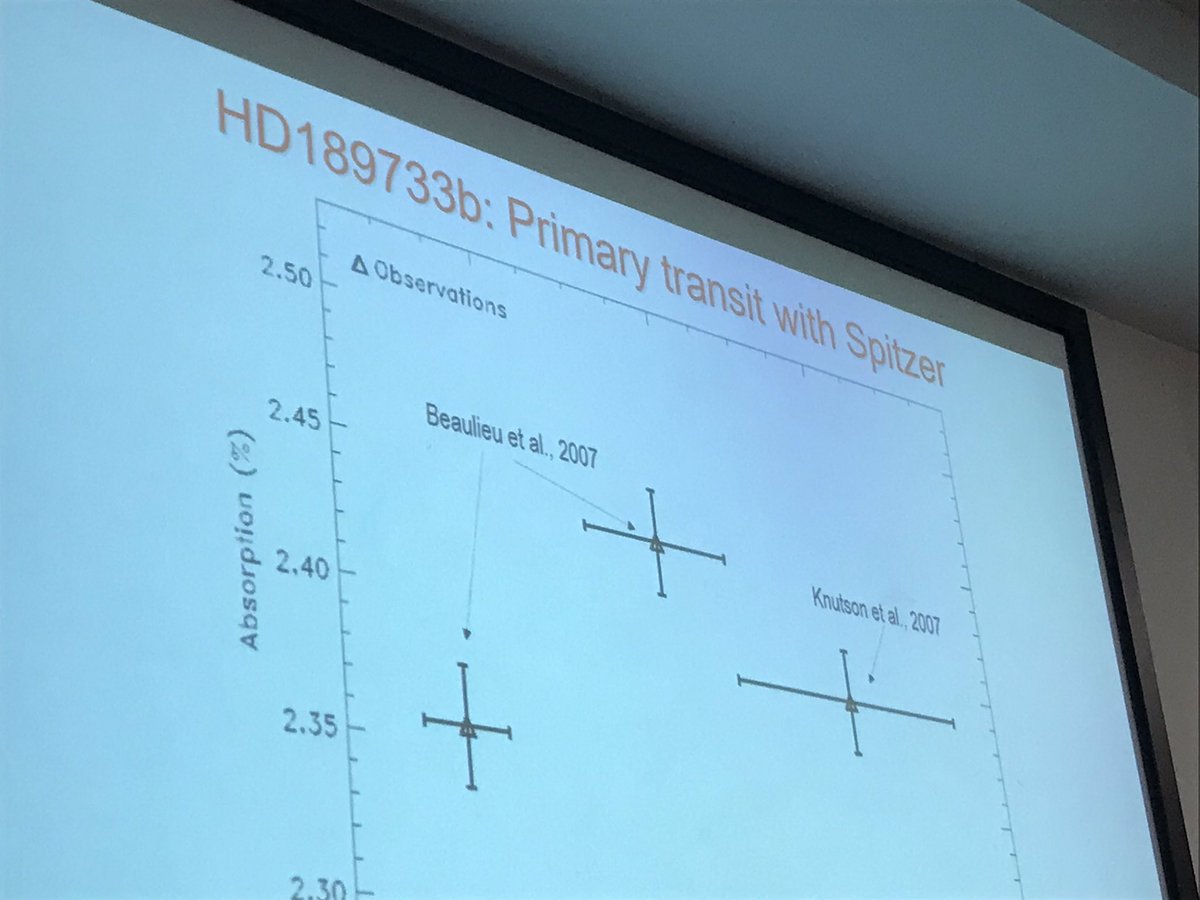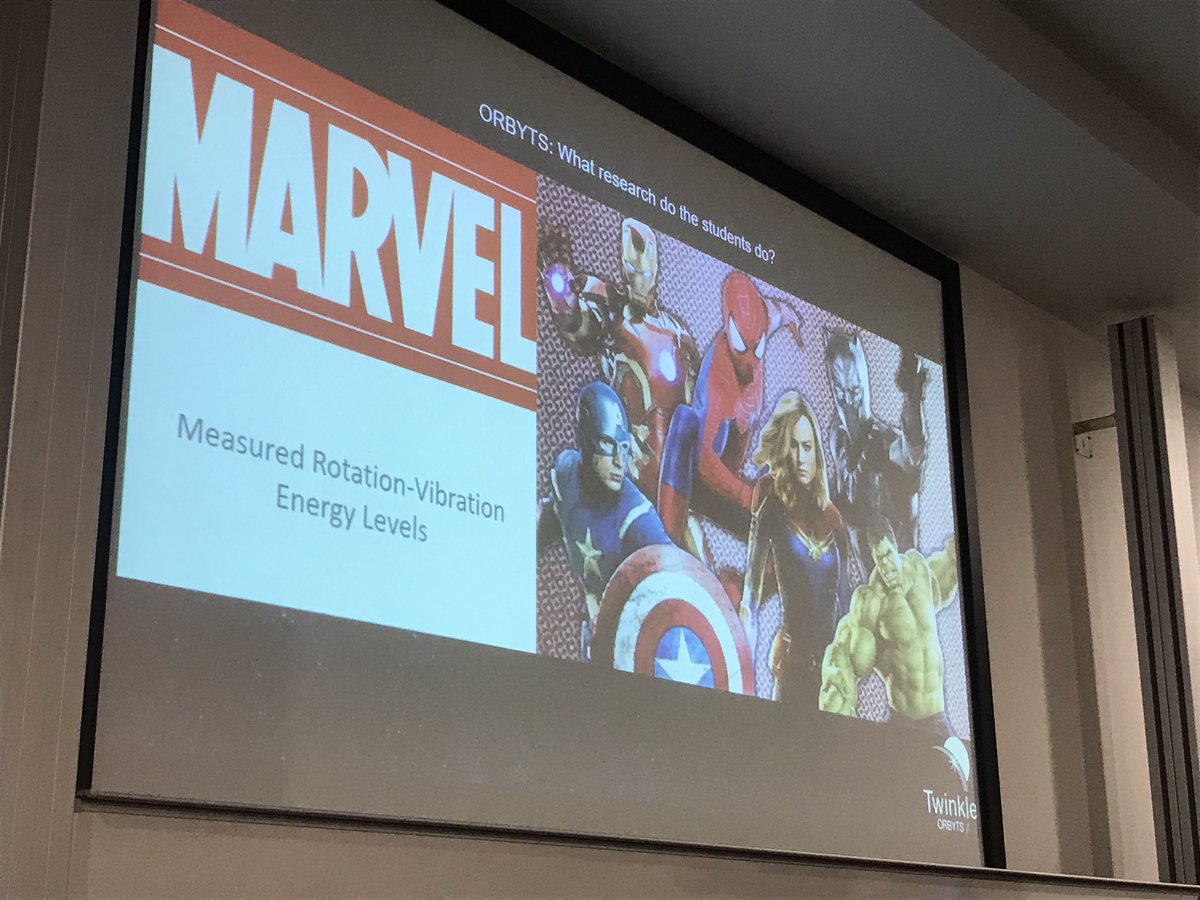Hi everyone. I’m about to start live tweeting a @twinkle_mission and @ucl event: the launch of #Orbyts for another year. We get local school pupils into #astronomy #CitizenScience. Tonight the schools are visiting to hear some science talks!
I was really lucky to be invited into #Orbyts by @astro__will! I’m going to be helping run a molecular spectroscopy project in a London school this year!
We’ve got a series of interesting speakers whose talks I’ll livetweet if WiFi permits. But a big point of #Orbyts is to show young people that researchers are everyday relatable human beings, not distant Einsteins etc.
All the researchers are introducing ourselves to our #Orbyts schools including goofy facts about ourselves  https://abs.twimg.com/emoji/v2/... draggable="false" alt="😁" title="Grinning face with smiling eyes" aria-label="Emoji: Grinning face with smiling eyes">
https://abs.twimg.com/emoji/v2/... draggable="false" alt="😁" title="Grinning face with smiling eyes" aria-label="Emoji: Grinning face with smiling eyes">
First #Orbyts talk: Raman Prinja, head of Physics and Astronomy. He says science is cross-disciplinary - different departments collaborate with each other all the time.
Raman: to understand how stars work, you need to know lots about radiation, atoms, chemical elements, exotic objects in space ... all science is connected to other science #Orbyts
Raman also says that just as scientists of different subjects need to work together, communities need to be connected to each other too. He wishes our new #Orbyts students a fantastic evening visiting UCL.
Next #Orbyts talk: Serena Vito on astrochemistry and the formation and evolution of stars and galaxies. (My favourite sort of stuff!) What happens to molecules in space?
Space isn’t empty - it’s full of molecules. Patches that look dark are simply clouds blocking starlight. They may shine in infrared light or microwaves. In these places stars form, or the molecules that create life exist. They’re very cold #Orbyts
Beg your pardon Serena Viti. My phone autocorrected your name  https://abs.twimg.com/emoji/v2/... draggable="false" alt="😠" title="Angry face" aria-label="Emoji: Angry face"> #Orbyts.
https://abs.twimg.com/emoji/v2/... draggable="false" alt="😠" title="Angry face" aria-label="Emoji: Angry face"> #Orbyts.
We’re now hearing about what happens when there’s enough gravity in these dark patches: stars form! And create big powerful high velocity jets! Eventually rings then planets form ...
We’re now hearing about what happens when there’s enough gravity in these dark patches: stars form! And create big powerful high velocity jets! Eventually rings then planets form ...
When stars die, they create most of the elements of the Period Table  https://abs.twimg.com/emoji/v2/... draggable="false" alt="😍" title="Smiling face with heart-shaped eyes" aria-label="Emoji: Smiling face with heart-shaped eyes"> #Orbyts
https://abs.twimg.com/emoji/v2/... draggable="false" alt="😍" title="Smiling face with heart-shaped eyes" aria-label="Emoji: Smiling face with heart-shaped eyes"> #Orbyts
And they also create lots more dust ... which blocks light, allows cooling, and thus more stars can form. Recycling FTW https://abs.twimg.com/emoji/v2/... draggable="false" alt="🙂" title="Slightly smiling face" aria-label="Emoji: Slightly smiling face">
https://abs.twimg.com/emoji/v2/... draggable="false" alt="🙂" title="Slightly smiling face" aria-label="Emoji: Slightly smiling face">
And they also create lots more dust ... which blocks light, allows cooling, and thus more stars can form. Recycling FTW
The telescopes in Chile that Serena is working with observe molecules, eg glycoaldehyde. Some are near, some very far away. We can use these molecules to understand star forming regions. Some #Orbyts students will do a project on this.
An #Orbyts project at a school last year studied a molecule involved in star formation that is also found in coffee and cheese. Yum! Space is delicious  https://abs.twimg.com/emoji/v2/... draggable="false" alt="😋" title="Face savouring delicious food" aria-label="Emoji: Face savouring delicious food"> And these school pupils got into the Astrophysical Journal. I’ll provide a link later, when I’ve tracked down that paper.
https://abs.twimg.com/emoji/v2/... draggable="false" alt="😋" title="Face savouring delicious food" aria-label="Emoji: Face savouring delicious food"> And these school pupils got into the Astrophysical Journal. I’ll provide a link later, when I’ve tracked down that paper.
#Orbyts “Next up, we have my boss,” warns @astro__will. We will be hearing about using X-rays to study space from Graziella Branduardi-Raymont. Her goofy fact is that she started studying very distant objects, but then objects closer and closer to Earth!
#Orbyts You can’t study space X-rays from the ground - it has to be from a space telescope.
Smile = Solar wind Magnetosphere Ionosphere Link Explorer. Astronomers love inventing silly names for their programs!
Smile = Solar wind Magnetosphere Ionosphere Link Explorer. Astronomers love inventing silly names for their programs!
The Sun can throw out hundreds of millions of tonnes of charged particles at hundreds of kilometres per second. When these hit the Earth’s atmosphere, they’re compressed and generate X-rays #Orbyts
These ions may have lost all or almost all their electrons. They might pick up one in the Earth’s atmosphere which puts them into an “excited state” and generates “soft X-rays. #Orbyts students might do a project on this.
Graziella shows #Orbyts audience a simulation of charged particles hitting our atmosphere
The school #Orbyts project on the aurora looks at visible and UV images from the ground and the International Space Station!
#Orbyts asked if they have questions. A student asks how often the coronal mass ejections from the Sun happen. At solar minimum (i.e. now) it can be 2x/week; at solar maximum it can be 5x/week! Most miss Earth, but they can damage satellites and voltage transformers etc.
“GPS - if that goes down, what happens to our civilisation?” Laughter  https://abs.twimg.com/emoji/v2/... draggable="false" alt="😃" title="Smiling face with open mouth" aria-label="Emoji: Smiling face with open mouth"> #Orbyts
https://abs.twimg.com/emoji/v2/... draggable="false" alt="😃" title="Smiling face with open mouth" aria-label="Emoji: Smiling face with open mouth"> #Orbyts
Next #Orbyts talk: Jonathan Tennyson (who is also on strike today). Exoplanets: what are they made of? We use molecular spectroscopy to find out. We know more about star composition than the centre of the Earth!
Spectral lines are complex enough for atoms, but much more so for molecules. Can get 10 billion spectral lines out of a molecule! #Orbyts
Spectroscopy: looking at what wavelengths of light are being absorbed or emitted by gases in space. Every atom or molecule have a specific, quantised set of wavelengths of light it absorbs and emits. That’s how we identify them. #Orbyts
(The reason they do this is one of my favourite scientific stories. If you’d like to know, ping me and I’ll talk your ear off later.)
CH3Cl (I think that’s a CFC we used to get in fridges?) has many billions of spectral lines due to electrons and bonds etc moving around in the molecule #Orbyts
MARVEL = measured rotation-vibration energy levels. An #Orbyts project, not easy to find in Google for obvious reasons.
We’re now hearing about all the ways in which computing these billions of energy levels and spectral lines can go wrong! #Orbyts School pupils do it very well, and can divide up the tasks.
Because lasers are all about these spectral lines, a laser developer used #Orbyts results to build a new type of laser!!!
(Look up what LASER stands for some time if you don’t believe me  https://abs.twimg.com/emoji/v2/... draggable="false" alt="😁" title="Grinning face with smiling eyes" aria-label="Emoji: Grinning face with smiling eyes">)
https://abs.twimg.com/emoji/v2/... draggable="false" alt="😁" title="Grinning face with smiling eyes" aria-label="Emoji: Grinning face with smiling eyes">)
The next #Orbyts talk will be from Marcell Tessenyi from @twinkle_mission. It usually takes ~20 years to build a spacecraft after thinking up the idea! Twinkle is one for exoplanet science, expected to find thousands of exoplanets and analyse their atmospheres.
#Orbyts Marcell: The Twinkle craft will always have its “back” to the sun, and rotate extremely slowly, over a year - so it can slowly get a 360° view of the sky. It’s due to launch in 2023. It’ll be “about the size of an American fridge”.
Marcell ends his #Orbyts talk with a wish that all the students enjoy their projects and how much he looks forward to seeing all their presentations in spring 2020. A student asks about space junk and the environmental impact of rockets. Good question!
Students ask where spacecraft are made and what it is that makes them so expensive to build.
“You know how easy it is to get technology to stop working...” https://abs.twimg.com/emoji/v2/... draggable="false" alt="😄" title="Smiling face with open mouth and smiling eyes" aria-label="Emoji: Smiling face with open mouth and smiling eyes">
https://abs.twimg.com/emoji/v2/... draggable="false" alt="😄" title="Smiling face with open mouth and smiling eyes" aria-label="Emoji: Smiling face with open mouth and smiling eyes">
#Orbyts
“You know how easy it is to get technology to stop working...”
#Orbyts
Jess works at Imperial on carbon semiconductors. You can print LEDs or huge solar panels out of these. She says she will make this relevant to space, and tell us why diversity is so important. #Orbyts
You can get chirality in everyday objects eg hands, shells, pasta, cars, or at the molecular level, or even in photons! Jess is working on chiral structures. Spearmint and caraway are the same molecule but chiral. #Orbyts “EVERYTHING IS REALLY INTERESTING!” -Jess
Sugars on Earth, and DNA, are chiral and all “right handed”. Obviously this drives evolution! Why? Astrochemistry is trying to find out if this is also the case in space. As galaxies spin, the light from them gets to us “twisted”. Does that affect molecules? #Orbyts
So that’s @jesswade’s work - part of it. But, she asks, why is it always the same sort of people who get into science? This isn’t fair and is also bad for science - and she wants to right this wrong #Orbyts
If it’s always privileged white men from the same schools and countries design all our science and technology, this affects our everyday life - face recognition technology is an example, or medical trials only testing drugs on white men #Orbyts
Jess now tells us the story of Jocelyn Bell Burnell. She said she discovered pulsars because her background was different to the rest of the team, so she thought differently. Hence, diversity leads to better science #Orbyts
#Orbyts @jesswade tells the audience they have many new challenges: fake news, renewable energy, antibiotic resistance etc. And that Wikipedia drives lots of question answering on the internet - and fewer women are on Wiki, which keeps exacerbating the problem.
Jess ends her #Orbyts talk by reminding us all to surround ourselves with people who don’t look like us - and to be nice to each other. Scientists get where they are by collaborating well, and making each other glad to work with them.

 Read on Twitter
Read on Twitter